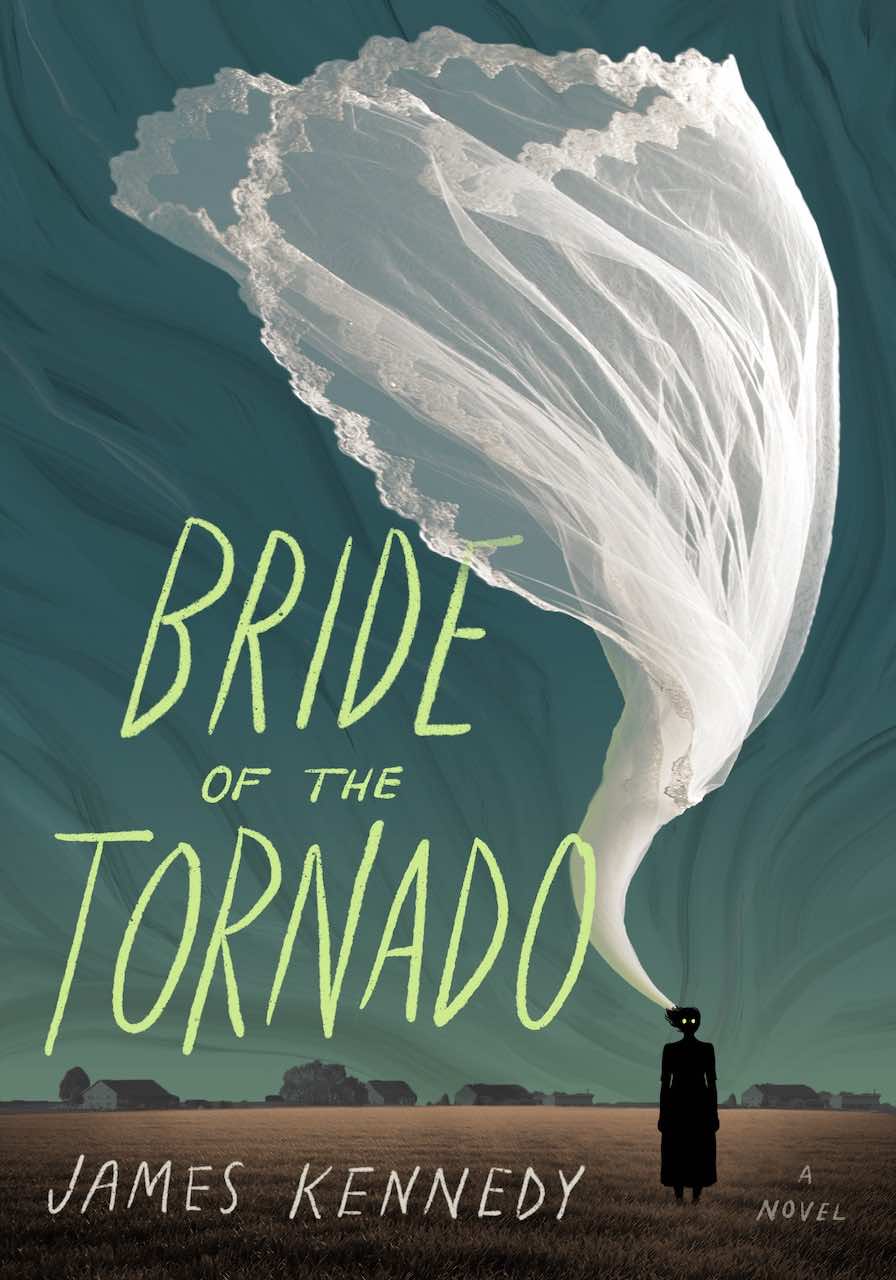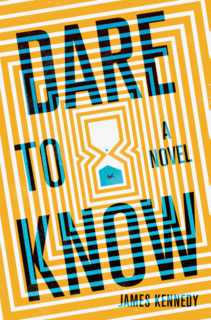How To Make A 90-Second Newbery, Step 3: Breaking Your Story And Writing The Script
September 21, 2017
« How To Make A 90-Second Newbery, Step 2: Read The Book And Start Planning How To Make A 90-Second Newbery, Step 6: Shot-By-Shot Analysis Of A Wrinkle in Time »

|
This is the third step in the “How To Make A 90-Second Newbery” series. If you haven’t already, check out Step 1: Watch Great Previous 90-Second Newberys and Step 2: Read The Book And Start Planning.
You’re ready to start the process of making your 90-Second Newbery video. You’ve watched previous successful 90-Second Newberys (Step 1). You’ve read the book, figured out a good “twist,” and pulled together some resources to make the movie happen (Step 2). What next?
You’ve got to write that script! With a solid script in hand, you have a much better chance of making a great movie.
In this post, I’ll start with some particular nuts-and-bolts advice on how to write a 90-Second Newbery script. Then I’ll expand the focus to give general advice on story structure that might prove useful.
So, let’s dive into advice on writing that script!
Wait, what’s a script? Maybe you’ve never written a script before. What does a script even look like? The good news is that it doesn’t matter if you do it “right” or “wrong.” This script is just for you and your group. The movie is the final product. That’s the only thing that really matters. A script is just a shared document that everyone can use to plan the movie.
Here is the shooting script that was used for the Wrinkle in Time 90-Second Newbery. Read it. It should be self-explanatory. (The only thing that might be mysterious are those scene headings. For those, INT means that the scene is shot indoors, and EXT means the scene is shot outdoors.)
Notice that the script is only 2 pages long. If your script is longer than 2 pages, your movie will probably be over 90 seconds. To be honest, that’s okay. We have some great “90-Second” Newberys that are actually 3 or 4 minutes long. But as a goal, you should at least try for 90 seconds. The movie will always end up running longer than you think it will.
Write a terrible first draft. I advise you jump right in. Take your first whack at writing the script, with the format of that Wrinkle in Time script as your guide. Don’t worry if your first draft is terrible or too long or unfunny or unoriginal. JUST GET A FIRST DRAFT DONE. You can worry about making it good later. You might even end up throwing away that first draft and starting over. That’s fine! Every time you write, you’re learning.
The “twist” you decided on in Step 2 will be crucial. It will give you the inspiration and direction to write this script. Maybe you will find, in writing the script, that the original “twist” you came up with doesn’t work. That’s fine! Throw out that twist and think up another! We’re early in the process, nothing is set in stone yet.
Make sure your script has a strong start. Kick off your movie with a visual situation that is fun or compelling or scary or weird! You’ve only got a few seconds to grab the viewer, so make those first few seconds count!
If writing a script beginning-to-end intimidates you, give yourself permission to write fragments out of order. Think of some “holy cow!” moments, some jokes, some scene ideas based on your twist. Once you have a lot of them, THEN think of ways to string them together.
Remember that movies are a visual medium. They’re about images, not words. Your script shouldn’t be of a bunch of people standing around talking, explaining the plot. As much as your story allows, your script should be chock-full of physical action, high-drama moments with lots of emotion, lots of scene changes to different interesting locations and costumes. You may be helped by what we learned from the movies we watched in Step 1—cinematic techniques like voiceover, green screen, special effects, shot composition, camera movement, etc.
Don’t be afraid to change the original story from the book. You only have 90 seconds to work with, so it’s unavoidable you’ll have to cut out a lot. It’s OK to merge two characters into one, drop subplots, change the order of events, etc. And if your changes are in service of the genre twist (think of the James Bond version of Ramona and Her Father, or the zombie version of Mr. Popper’s Penguins), then all the better!
Once you’ve knocked together a terrible first draft, have everyone in your group look at it and offer suggestions on how to make it less terrible. After you’ve taken those suggestions, give your edited-but-still-terrible first draft to someone who isn’t even in the group, someone who hasn’t even read the book. What do they think? Does the script make sense to them? Or is it truly terrible?
Oh no! My terrible first draft really is terrible! That’s okay, it’s supposed to be terrible. What, did you think you’d write something perfect off the top of your head? That’s not how creativity works. You must embrace the possibility of writing garbage in order to free yourself to find the good stuff. A bad first draft is better than no draft at all.
Let’s put that terrible first draft aside for a moment. Forget about it for now. Let’s look at the original story again.
The number one problem I see in bad 90-Second Newbery movies is that the movies make no sense. I mean literally no sense, like it’s impossible to tell what’s going on. This happens because the filmmakers try to cram too much plot into a short movie. They don’t know which scenes to keep and which to discard. And the scenes aren’t linked to each other in a storylike way. They just all feel like disconnected bits that have nothing to do with each other.
How do you avoid that fate? After all, it’s easy for these movies to get confusing and incoherent, because so much story info is being smooshed into such a short timeframe.
Luckily, there’s a great method.
Discover the “beats” of the story, and determine how each is linked with the magic words therefore or but. I didn’t invent this next piece of advice. I learned it from the creators of South Park, Trey Parker and Matt Stone. They explain it better than I can in this video.
In case you can’t watch that video, I’ll explain it here and point out how it relates to the 90-Second Newbery.
In order to keep our story feeling like a story, we must always make sure our audience understands what is happening in the story, and why it is happening. Otherwise, the audience will be bored or confused.
The good news is that you already have a good story. After all, the book you’re adapting won a Newbery Medal or Honor. So the fundamentals of its structure are probably sound. Your story has good “bones.” So let’s take a closer look at that story.
To get a grip on what you need to write, try writing out the “beats” of the original story—the important actions that cause big changes.
For instance, in A Wrinkle in Time . . .
1. Teenager Meg is dissatisfied with her life, especially that her Dad is missing
2. Meg hangs out with her little brother Charles Wallace and they meet friendly witches
3. Meg and Charles Wallace discover their Dad is being held on another planet
4. The friendly witches take them to the other planet
. . . and so on.
Once you’ve written out the “beats” of the story, try to find a way in your script to link each beat to the next beat by cause-and-effect. That means, many of the beats of the story should somehow cause the next beat to happen. Beat 1 happens, therefore Beat 2 happens. “Bob heard a noise outside, therefore he went to investigate.” “Susan saw the monster coming, therefore she hid behind the tree.”
You won’t be able to do it in every beat. That’s because sometimes the beats aren’t linked by cause-and-effect, but rather an unexpected resistance or complication. That is: Beat 1 happens, but Beat 2 happens. “Caroline wanted to buy an apple, but the grocery store was closed.” “Sam wanted to ask Lisa to the dance, but Lisa told Sam she was already going with Zack.”
Alert! Here’s what doesn’t work in a story: Beat 1 happens, and then Beat 2 happens. A story fails when too many beats lack a “therefore” or “but” connection, but are simply one thing after another. “I went into the basement and then my dog died and then my dad made pasta for dinner and then aliens blew up the world.” All these incidents in isolation might be interesting, but they’re not related to each other in any story-like way, and so the audience will get confused and unhappy and bored.
To sum up: write your script such that as many story beats as possible can be connected to the next by the word therefore or but, and not merely and then. It will make the story easier to understand—and don’t be afraid to change the story a little in order to make these links clearer!
By the way, you will definitely have to discard some of the original beats of the story in order to make a short movie. Our version of A Wrinkle in Time completely drops the Happy Medium, Aunt Beast, Sandy and Dennys, the Man with Red Eyes, the trip to Uriel, and more. And then it stitches the remaining beats together, connecting them with therefore (Charles Wallace hears a noise outside, therefore he and Meg go outside) or but (Meg, Charles Wallace, and Calvin tesser to Camazotz, but their way is blocked by a basketball-playing robot) with a minimum of and then.
Again, you can see Trey Parker and Matt Stone of South Park explain this insight in this video.
Another way of organizing your story: Dan Harmon’s “Story Circle.” Here’s writing advice from another successful TV writer, Dan Harmon (the showrunner of the NBC sitcom Community and the co-creator of the Cartoon Network’s Rick and Morty). I’m offering it not because your script necessarily has to follow this scheme, but because it’s another helpful way to think about story structure, and it might help your script.
Dan Harmon adapted his “Story Circle” from the anthropologist Joseph Campbell’s idea of “The Hero’s Journey.” I, in turn, am going to adapt my explanation from Dan Harmon’s own essay, which you can read here (warning, there is some salty language): Part 1, Part 2, Part 3, and Part 4.
In the “Story Circle,” many stories can be broken down into seven simple steps:
- A character is in a zone of comfort
- But they want something.
- They enter an unfamiliar situation,
- Adapt to it,
- Get what they wanted,
- Pay a heavy price for it,
- Then return to their familiar situation,
- Having changed.
You can arrange these steps around a circle, like so:

|
Let’s look at these steps one-by-one in the context of some Newbery-winning books and well-known movies, and see how that knowledge can be used in making your video. Then we’ll observe how these steps are fulfilled in a classic 90-Second Newbery video.
1. “You” – ESTABLISH A PROTAGONIST
In your movie, you need to make it clear as quickly as possible who the protagonist of the story is. If not, the audience will get frustrated watching a bunch of different characters of confusingly equal importance. If the audience can get inside a specific character, then they can get inside the story.
In Star Wars, we don’t meet Luke Skywalker until 20 minutes into the movie. But you only have around 90 seconds! So your hero must be the first person the audience sees, or one of the first. Have that hero say a line or do something interesting in character right away. Make the hero’s name clear as quickly as possible.
In A Wrinkle In Time, we start with Meg worrying in bed during a storm. In Mrs. Frisby and the Rats of NIMH, we immediately meet Mrs. Frisby and learn she is the head of a family of field mice living in a farmer’s garden. In From the Mixed-Up Files of Mrs. Basil E. Frankweiler, we learn in the first sentence that Claudia is a kid who wants to run away, but wants to do it in a certain way.
If you give the audience a clear protagonist with a personality right away, the audience will be on board, grateful that they have a hero to root for.
2. “Need” – SOMETHING AIN’T QUITE RIGHT
This is where we show that something is not quite right in the universe, no matter how large or small that universe is. And that problem shows us what the hero wants.
In A Wrinkle in Time, the big problem is that Meg’s father is missing. In Mrs. Frisby and the Rats of NIMH, the problem is that Mrs. Frisby’s baby mouse Timothy is sick and can’t be moved, and the farmer is planning to plow up Mrs. Frisby’s home. In From the Mixed-Up Files of Mrs. Basil E. Frankweiler, the problem is that Claudia feels bored and unappreciated in her family.
In all these cases, that problem—the thing that’s not right in the world—leads to a specific want for the hero. Meg wants to find her father. Mrs. Frisby wants to move the house and heal Timothy. Claudia wants to run away from home and have an adventure.
3. “Go” – CROSSING THE THRESHOLD
This is where your hero takes action and enters the world of adventure. Meg meets the witches and agrees to travel into space to rescue her father. Mrs. Frisby risks her life by going to visit the owl and the rats to enlist their help. Claudia teams up with her brother Jamie and they run away to the Metropolitan Museum of Art.
This step is what your story is “about.” It’s the thing you would put on the movie poster. Everything below this part of the circle is the “special world,” the “adventure world.” Luke has blasted off of Tatooine with Han Solo and everyone else on the Millennium Falcon. Indiana Jones gets on a plane in search of the Ark of the Covenant. If possible, show the contrast between these two worlds—the ordinary world we’ve inhabited until now, and the world of adventure we must now grapple with.
4. “Search” – THE ROAD OF TRIALS
This is where your hero meets the challenges that crop up when they pursue their goal. Our hero gets thrown into the deep end of the adventure, and now it’s sink or swim!
Meg, Charles Wallace, and Calvin travel through space and time and try to come to grips with the evil alien planet of Camazotz. Mrs. Frisby uses her wits and bravery to find her way into the rat’s nest, and discovers the rats are secretly technological geniuses. Claudia and Jamie figure out how to survive living at the Metropolitan Museum of Art: scrounging money, hiding in the bathrooms to avoid guards, learning about the museum’s collections.
This is the part of the story where our hero is making allies and fighting enemies. Luke Skywalker and his friends are running around inside the Death Star, fighting storm troopers. Indiana Jones is traveling to exotic places, joining with old friends Marion and Sallah, and digging in the desert. Our hero is adapting to the world of adventure, they are meeting the challenges that are thrown at them, which leads us to . . .
5. “Find” – MEETING WITH THE GODDESS
The test and difficulties of the previous “Road of Trials” have all prepared your hero for this moment. At this moment, your hero finds what they were looking for . . . although it’s never exactly what they had expected.
This is a special pivot point. It’s at the very bottom of the circle, in the center. Imagine your hero began at the top and has tumbled all the way down here. The story’s natural tendency to pull your hero downward has done its job, and for a moment, we are in a special state. This is a time for major revelations, and total vulnerability.
After this point, everything will take a different direction. It will a new kind of effort for the hero, and the hero will have to make more difficult choices, after this point.
This is where Meg finally finds her father on the evil planet Camazotz—but he’s not going to solve their problems, as she’d hoped. Mrs. Frisby gets the rats to agree to help her—but she also learns that her dead husband was best friends with the rats, that he shared a history with them, though he never shared that secret with her. Claudia and Jamie manage to solve the mystery of who carved the “Angel” statue in the museum. In Frozen, Anna finally finds Elsa in her ice castle.
This is an important moment. The hero wins a brief victory here, and seems to get what they want. Luke Skywalker finally rescues Princess Leia in the depths of the Death Star. Indiana Jones finds the Ark of the Covenant. But this leads to the next step . . .
6. “Take” – MEET YOUR MAKER
Everything falls apart here. The goal your hero sought—and for a moment, thought he had achieved—is actually further away than ever. Or the dream your hero tried to achieve turned out to be a nightmare. Or the hero got his goal, but it led to all kinds of catastrophic side-effects. In short: there is a price for meeting the goddess. This is the part of the story where things get real.
This is where your hero must suffer.
If this is an action movie, this is the part where our hero gets his butt kicked. In a love story, this is the part where they break up. The friend the hero trusted turns out to be a traitor. The mentor who trained the hero dies. The dark night of the soul happens here.
Meg gets her father away from the evil of Camazotz, but she ends up leaving her now-hypnotized brother Charles Wallace behind. The plan goes wrong and Mrs. Frisby is captured by the farmer’s family. The museum dismisses Claudia’s and Jamie’s discovery about the statue, and Claudia cries, and they consider going home in a kind of defeat.
Up until now, everything in the adventure has been preparing the hero for that meeting with the goddess. Now the hero is paying the price.
Luke Skywalker may have rescued Princess Leia, but he still has to fight his way out of that nightmarish space station, and watch his mentor Obi-Wan Kenobi get murdered by Darth Vader, before he can totally escape. Indiana Jones may have found the Ark of the Covenant, but the Nazis steal it from him almost immediately, and they leave him in the pit to die. Anna may have found Elsa, but Elsa blasts Anna in the heart with her ice-power.
Here the hero has to suffer the unendurable, learn the worst truths, come face to face with their weaknesses, and lose their allies.
7. “Return” – BRINGING IT HOME
This is the opposite of “crossing the threshold” in step 3. We are now leaving the world of adventure, and that’s not easy. It was difficult to get in, and it’ll be difficult to get out. This is the point where the hero must reach deep down, be inventive, and risk everything they’ve got.
Meg goes back to Camazotz, alone, to save Charles Wallace. Mrs. Frisby escapes the farmer and warns the rats that their home is about to be destroyed, and the rats abandon their nest just in time. Claudia and Jamie, instead of buying a train ticket home, instead audaciously buy a ticket to visit Mrs. Basil E. Frankweiler herself.
If this is an action movie, here’s where you have your big car chase or bonkers fight scene. Or, in a love story, having realized what’s important, the hero must run all the way across town before his girlfriend gets on the plane and leaves his life forever. Luke Skywalker and Han Solo blast through a whole squadron of TIE fighters, they make it to the rebel base, but then Luke decides to join the Rebellion to return to the Death Star and blow it up. Indiana Jones takes one wild risk after another to chase the Nazis who have stolen the ark from him.
But for the hero get the ultimate prize, and finish the story, the story must demonstrate how the hero has changed. Which leads us to the final step . . .
8. “Change” – MASTER OF BOTH WORLDS
The hero faces a final challenge or situation, and the way he deals with the challenge shows us how the story has changed him.
Meg stops worrying about herself and takes a bold risk, using just her love to rescue Charles Wallace from the giant disembodied brain. She’s a much braver Meg than the girl we met at the beginning. Claudia and Jamie are able to navigate Mrs. Basil E. Frankweiler’s mixed-up files, using the knowledge and moxie they’ve gained over the adventure to find the true solution to their mystery. It shows how Claudia and Jamie have both grown, both individually and as a team.
In an action film, this is where you put the ultimate showdown between the hero and the villain. In a love story, this is where the hero runs across the tarmac, stops the airplane, gets on board and makes a big speech to his girlfriend that causes her to love him again and take him back.
This is where the hero proves how the story has changed them.
In Star Wars, Luke uses what he’s learned about the Force to do the impossible and blow up the Death Star. This proves he’s no longer a naive farm boy, he’s on his way to being a Jedi knight. In Raiders of the Lost Ark, Indiana shuts his eyes when the ark is opened, because this once-skeptical archeologist now believes in and respects its supernatural power.
The hero is has changed. They have been to the strange place, they have adapted to it, they have discovered some true things, and now they are back where they started (though not necessarily literally). But our hero is now forever changed, and perhaps able to create change too.
They’ve earned it. You’ve watched them earn it. And that’s why it’s a good story.
Uh, cool story bro, what does this have to do with the 90-Second Newberys? Good point. That’s a lot of story structure to learn, but what does that have to do with making a movie?
Well, remember how I said that the number one problem with bad 90-Second Newbery movies is that they don’t make any sense? That they just seem to be like a random collection of scenes? You can use this Story Circle to organize your script, so that it truly feels like a story.
To make your movie feel like a satisfying re-telling of the original Newbery book, find what elements of that original story correspond to the points on the Story Circle, and write your script with that in mind. Those eight story beats on the Story Circle are probably already in that Newbery book in one form or another, you just have to read it carefully to find them. And use that to structure your script.
Let me give you an example based on a simple story. Here’s a 90-Second Newbery of the vignette “Monsters and Giants,” from Frog and Toad Together:
Pretty good movie, right? Definitely one of the best that I’ve received. And one of the reasons for that is—aside from the adorable puppets, the entertaining voiceover work, the ingenious cinematography—it fulfills all eight points of the Story Circle:

|
Pretty nifty how that works, huh? So if you’re wondering what scenes are important to include from the book in your 90-Second Newbery movie, the Story Circle can be an invaluable tool.
And you just learned some important truths about how stories work in the bargain!
That’s it from Step 3 of “How To Make A 90-Second Newbery.” In the next post, we’ll analyze an existing 90-Second Newbery movie to give you tips on cinematography, camera movement, sound, and editing!

















